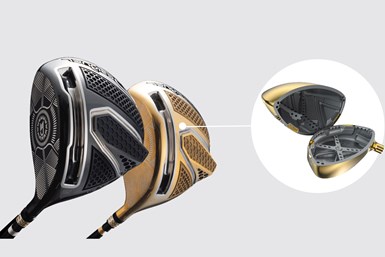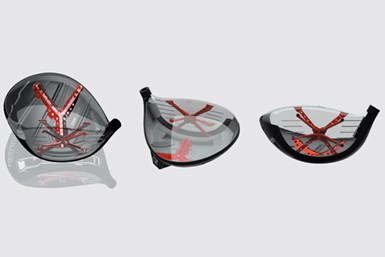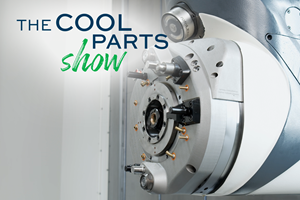Titanium Golf Club Line Leverages AM to Boost Clubhead Performance
Japanese lifestyle golf brand Designer utilizes Farsoon 3D printing to optimize the design and production of its latest titanium golf club line.
Sporting enthusiasts are always looking for an edge to take their play to the next level. For golfers, that edge may now literally and figuratively come in the form of additive manufacturing (AM).
There are many little tricks and tips to improve a golfer’s game. But one of the best ways to immediately see an improvement is to get better (or the right) equipment. A particular golfer might need a longer putter, bigger driver or even lighter clubs.
Japanese lifestyle golf brand Designer was looking for its own creative edge when it began utilizing laser powder bed fusion, specifically Farsoon’s dual-laser FS200M metal 3D printing system, to create its Titanium Golf Club Line. According to the company, the
Use of metal 3D printing enables Designer to innovate, design and produce clubheads for players seeking improved performance in distance, accuracy and stability with greater forgiveness. Novel features of the club made possible through 3D printing in a strong, lightweight titanium alloy include a design with self-supported internal structures, and a high-speed impact surface engineered for ductility and strength for the perfect strike. Performing design, development and series production on the dual-laser system is said to result in design-through-manufacturing cost per clubhead savings of about 70% compared to the golf club maker’s conventional processes. A multilayer thickness parameter aids productivity in production.
One-Piece Production, Improved Precision
Assembly consolidation is part of this savings. A typical clubhead geometry includes toe, face, sole, crown, heel and hosel. With Farsoon’s metal 3D printing, the clubhead can be produced in one piece, with improved precision and performance compared to the conventional club. The integrated structure offers greater resistance to twisting, and increased stability and driving distance for the player.
Streamlining Geometries
The company says the 3D printed Designer clubheads include many aerodynamic features to enable wind to flow faster and smoother over the integrated geometry, thereby reducing drag and increasing both head stability and speed. A distinctive “sound window” design is said to offer a more pleasant sound on impact.
Related Content
How Additive Manufacturing Is Transforming EVs and Transportation: AM Radio #23
As 3D printing is adopted into the electric vehicle (EV) market, it is not just vehicles that are being reshaped. In this episode of the AM Radio podcast, we discuss additive manufacturing and the future of transportation.
Read More3D Printed Metal Component for CNC Machining Center: The Cool Parts Show #47
Machine tool maker DMG MORI improved this coolant delivery adapter by making the part through additive manufacturing instead of machining. One of the viewer-chosen winners of The Cool Parts Showcase.
Read MoreIndyCar's 3D Printed Top Frame Increases Driver Safety
The IndyCar titanium top frame is a safety device standard to all the series' cars. The 3D printed titanium component holds the aeroscreen and protects drivers on the track.
Read MoreThis Drone Bird with 3D Printed Parts Mimics a Peregrine Falcon: The Cool Parts Show #66
The Drone Bird Company has developed aircraft that mimic birds of prey to scare off problem birds. The drones feature 3D printed fuselages made by Parts on Demand from ALM materials.
Read MoreRead Next
Looking to Secure the Supply Chain for Castings? Don't Overlook 3D Printed Sand Cores and Molds
Concerns about casting lead times and costs have many OEMs looking to 3D print parts directly in metal. But don’t overlook the advantages of 3D printed sand cores and molds applied for conventional metal casting, says Humtown leader.
Read MoreTo Improve Performance of Compression Molded Composites, Add 3D Printed Preforms
9T Labs' Additive Fusion Technology enables the manufacture of composite structures with as much or as little reinforcement as is necessary, using 3D printed continuous fiber preforms to add strength just where needed.
Read MoreVideo: Intelligent Layering Metal 3D Printing at 3DEO
Contract manufacturer 3DEO delivers metal parts using Intelligent Layering, a binder jetting-like 3D printing process the company developed and operates internally. Here’s how it works.
Read More









.png;maxWidth=300;quality=90)















